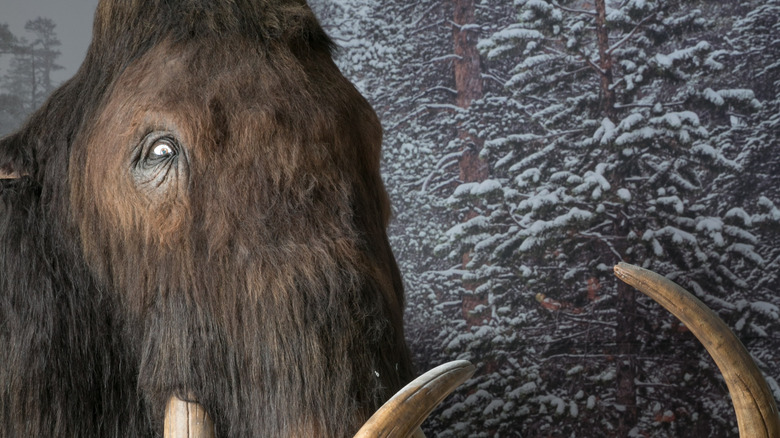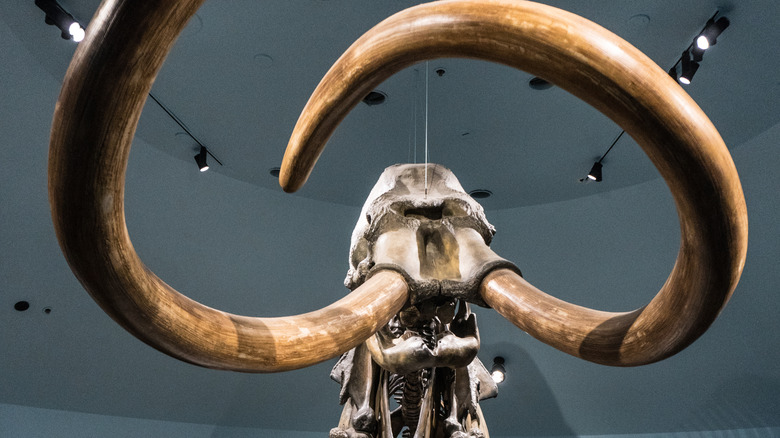The New Theory About Why Woolly Mammoths Really Went Extinct
Woolly mammoths — that family of great, fur covered ancestors of the modern elephant — roamed the Earth from the Pleistocene Epoch through the early Holocene, according to Britannica. The oldest preserved DNA from an ancestor of the woolly mammoth dates back about 1 million years, and mammoth fossils have been found on every continent other than Australia and South America. Up until now, the consensus was that woolly mammoths died out about 13,000 years ago. New research, however, casts that number in doubt. There's also a new theory about why the woolly mammoth really went extinct.
Much of what we know about the mammoth comes from bodies found well-preserved by the frozen tundra in areas like Siberia and the Arctic. Because of these discoveries, scientists are able to study the skin and organs of the animal, per CBC Kids. Some young mammoth remains were even found with fecal matter in their digestive system, and mother's milk in their belly. It's also known that mammoths figured heavily in early cave paintings, proving they interacted with humans. It's now believed that humans could have faced the woolly mammoth much more recently than scientists thought.
Small groups survived longer
According to recent research, there's DNA evidence that although mammoth populations were in decline, small pockets of the animal persisted on Arctic islands, among other areas — alongside steppe bison and the prehistoric horse — up until 5,000 years ago. This changes not only when the woolly mammoth disappeared, but also how they met their fate. For context, it's now believed mammoths survived up until about the same time the ancient Egyptians built the Great Pyramid of Giza — that's about 8,000 years longer than previously believed.
These discoveries were made possible by new technology enabling researchers to extract minute traces of DNA from soil samples, per All That's Interesting. Even though a warming climate and human hunting certainly played a part in the decline of the woolly mammoth, scientists now believe inbreeding and a lack of genetic diversity in these isolated groups of survivors eventually drove them to extinction: gone, but not forgotten. Some scientists now hope to bring back the mammoth from DNA samples extracted from remains, per CNN.

